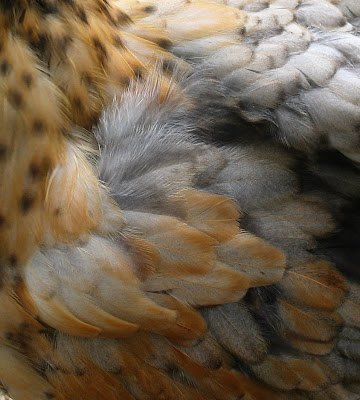This is the story of The Mighty Pigaloupe.
All winter long, the sheep ate hay in their paddock. Inevitably, a lot of it was spilled on the ground and wasted. Naturally, the sheep added a lot of manure to the mix. The ground grew thick with mulch.
In the early spring, I took the sheep out of that paddock and put the new pigs in there. The pigs plowed up every foot of the soft, well-mulched soil like diligent, four-legged rototillers, and added their own manure to the mix.
At some point in mid-spring, we bought a cantaloupe from the store. After we ate it, we fed the guts and rinds to the pigs in the paddock.
In mid-summer, with the pigs now moved to a different pasture, I discovered cantaloupe plants growing all over the paddock. Huge, sprawling plants, with many, many flowers, and lots of young cantaloupes starting to form.
"Hmm," I thought. "The sheep fertilized and mulched the soil, the pigs cultivated the ground and planted the seeds. I have a garden growing here without me having to do any of the work. I wonder if these cantaloupes can get all the way to harvest without any effort from me at all? No weeding, no watering, no fertilizing, no pest control. Nothing."
It has been a brutally hot summer. Temperatures have been over 100 degrees for many, many days, and we have had almost no rain at all. My pastures have barely grown an inch in the last month and a half.
I checked on the cantaloupes frequently, out of curiosity, but I didn't assist them in any way. On a couple of the most scorching days, the leaves started to wilt and I thought maybe I'd have to water the plants eventually. But then we'd get a tiny little 15-minute shower of rain, and because the plants were growing in such deep, organically-rich soil, that tiny amount of moisture was enough.
Today, officially, the zero-effort gardening experiment became a success. I harvested the first cantaloupe (officially named: "The Mighty Pigaloupe"!) this afternoon, without having done a single bit of work to make it grow.
The Mighty Pigaloupe weighed 10 lbs. 2 oz. and had a circumference of 27 inches. I looked it up: the average size of a cantaloupe is 4-9 lbs. so this really is a whopper! It was nearly as big as the full-sized dinner plate I set it on.
There are many, many more cantaloupes out in the paddock, at various stages of growth. The vines are still growing, still flowering. We're going to have all the cantaloupes we can possibly eat, plus plenty to share with our industrious, seed-planting pigs.
I'm one of those odd people who loves living on a farm, loves working with the livestock, but does not particularly love gardening. I like the CONCEPT of gardening, I like the results. But the endless digging and weeding and fighting pests I find mind-numbing and tedious. By nature, I'm much more of a hunter-gatherer. I'd love to wander, foraging food from plants I didn't slave over all summer.
So this whole cantaloupe experience got me to thinking: How can I adapt this low-input idea so that I can have as many wonderful, home-grown veggies as possible, with very little effort?
If I do a similar thing with the sheep and the pigs over the winter and early spring, I could easily plant the whole paddock with the big-seeded, sprawling type of veggies. Squash, melons, pumpkins, zucchinis, cucumbers, beans, tomatoes, peas, corn... seems like those might all be vigorous, large plants that could outgrow the weeds and thrive in that rich soil.
I'm planning to plant a regular garden too, but now I want to incorporate some of these ideas into how I build that garden as well.
I've got a long time to plan before next planting season. In the meantime, I'd love to hear any of your ideas and hints for low-effort gardening!





































































.jpg)
